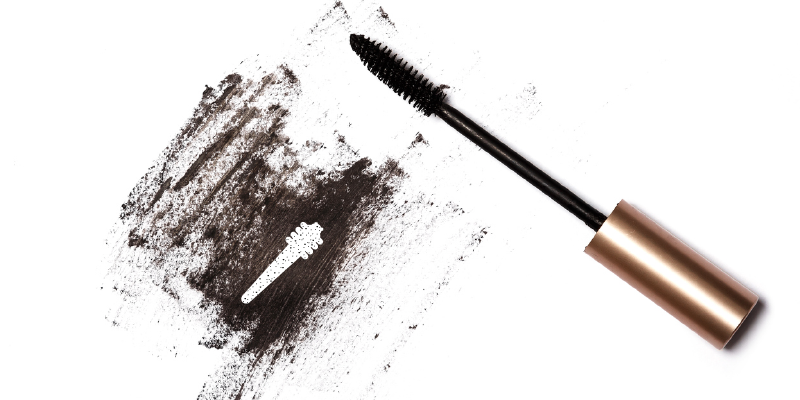By Sean Tighe
Updated: August 1, 2019
Demodex mites are one of the most common causes of blepharitis, yet it still remains an often overlooked differential diagnosis. Although there is much information published on the treatment of Demodex, some dialogue still focuses on traditional treatments such as baby shampoo, lid scrubs, and ointments that are ineffective in addressing the core of the problem: the Demodex mites.
Here are some myths and facts to help debunk some common beliefs surrounding Demodex Blepharitis:
Myth: Demodex Blepharitis is not very common.
Fact: A recent meta-analysis has shown that 44% of Blepharitis patients have Demodex with the prevalence increasing dramatically as people get older.1 In fact, 100% of patients aged 70 years and older are estimated to carry a colony of 1000 to 2000 mites.2
Myth: You will only find Demodex on your eyelids.
Fact: In addition to eyelids, Demodex can be found throughout the facial skin because the sebaceous glands secrete oil (the main food source for mites) more actively in the nose, cheeks, and forehead.
As the Demodex population increases in these areas, it has been linked to the development of various lesions and skin diseases such as rosacea and acne.3
Myth: There are many effective treatments for killing Demodex mites.
Fact: Demodex is resistant to a wide range of antiseptic solutions4 and other traditional treatments, such as eye drops and wipes, only treat its symptoms.
Cliradex eyelid cleansers get to the core of the problem and within days mites begin to disappear.
Myth: 4-Terpineol, the key constituent of Tea Tree Oil (TTO), and pure TTO are equally effective in eradicating Demodex.
Fact: A recent study showed that 4-Terpineol is the most important ingredient in TTO with greater effectiveness than TTO itself.5
There are also ingredients in TTO that limit its overall effectiveness and are known to cause irritation.
Myth: Using 100% TTO (melaleuca alternifolia) is safe and effective.
Fact: Pure TTO can be irritating near the eyes. Cliradex contains 4-Terpineol, which is clinically proven to kill Demodex mites better than TTO alone, and at a concentration low enough that it doesn’t irritate the eyes, and is safe for everyday use.
Myth: Having an eye-related surgery scheduled? You shouldn’t be concerned about your eyelids and lashes.
Fact: Up to 50% of refractive surgery patients have some form of ocular surface disease.6 This subsequently may result in an unstable tear film, distorted vision, and lead to patient displeasure following surgery.
Patients undergoing cataract or refractive surgery can also be at great risk for infectious keratitis or even endophthalmitis.
Myth: Your doctor needs a microscope to diagnose Demodex.
Fact: Although initially, it was helpful to have a microscope, doctors are able to diagnose Demodex without epilation7 by looking for clinical signs such as cylindrical dandruff and the absence of lashes. Research shows that cylindrical dandruff is pathognomonic for Demodex.8
Myth: It’s scary to learn you have mites on your lashes.
Fact: Not really. Learning what causes your irritation, being able to manage and cure it, is much better.
To learn how Cliradex is made, download our brochure now. Download the Brochure Now
References:
- Zhao Ya-E, Wu Li-P, Xu Ji-R. Association of Blepharitis with Demodex: A Meta-analysis. Ophthalmic Epidemiology. 2012; 9(2), 95-102.
- POST, C. F., & JUHLIN, E. (1963). Demodex folliculorum and blepharitis. Archives of dermatology, 88(3), 298-302.
- Jarmuda, Stanisław, et al. “Potential role of Demodex mites and bacteria in the induction of rosacea.” Journal of medical microbiology 61.11 (2012): 1504-1510.
- Gao Y, Di Pascuale M, Li W, et al. In vitro and in vivo killing of ocular Demodex by tea tree oil. Br J Ophthalmol. 2005; 89:1468–1473.
- Tighe S, Gao Y-Y, Tseng SCG. Terpinen-4-ol is the most active ingredient of tea tree oil to kill Demodex mites. Trans Vis Sci Tech. 2013; 2(7):2.
- Luchs J, Buznego C, Trattler W. Incidence of blepharitis in patients scheduled for phacoemulsification. Presentation, ASCRS. Boston; April 2010.
- Mastrota K. Method to Identify Demodex in the Eyelash Follicle Without Epilation. Opt & Vision Sci. 9(6), e172-174. 2013.
- Gao YY, Di Pascuale M, Li W, et al. High prevalence of Demodex in eyelashes with cylindrical dandruff. Invest Ophthalmol Vis Sci. 2005;46:3094–3098.
Sean Tighe is a Product Development Manager and Scientist at TissueTech Inc. in Miami, FL.





